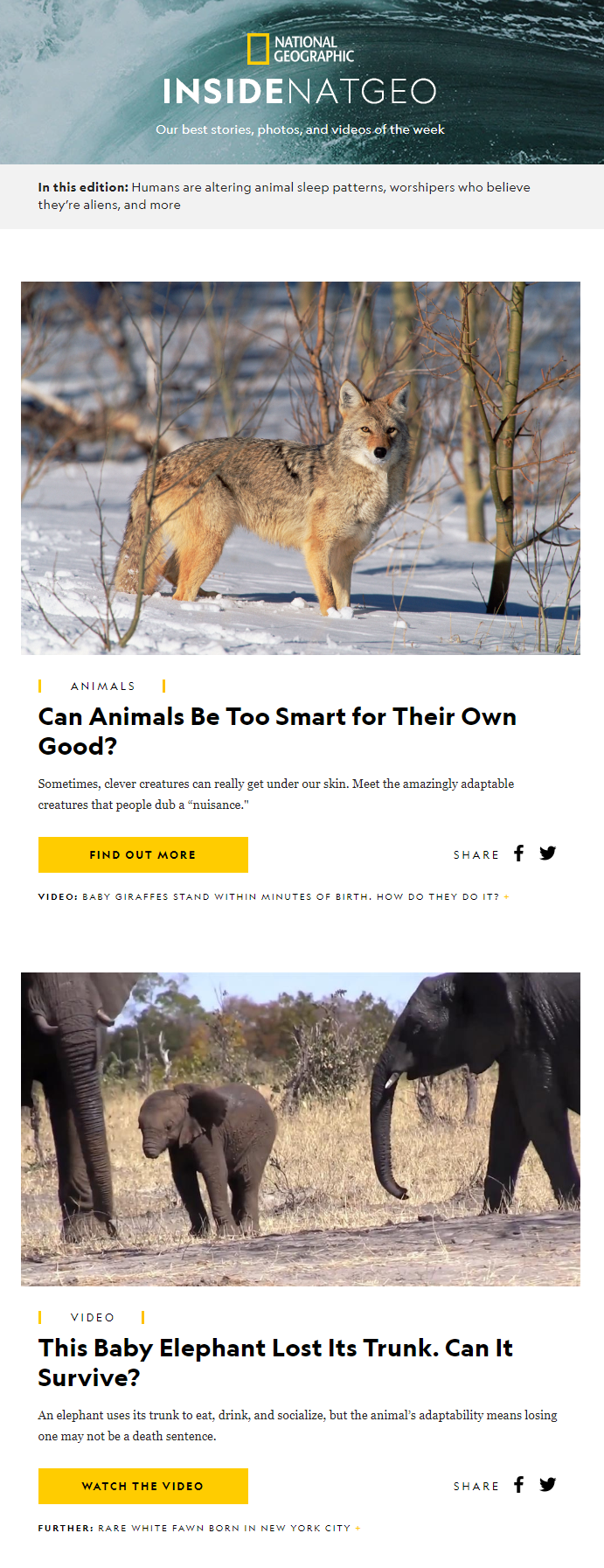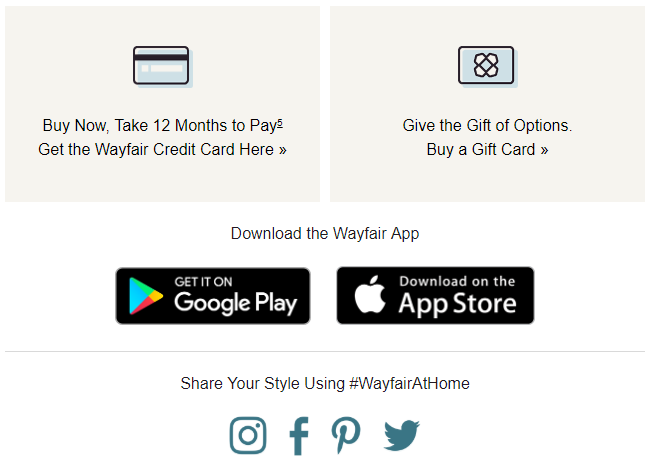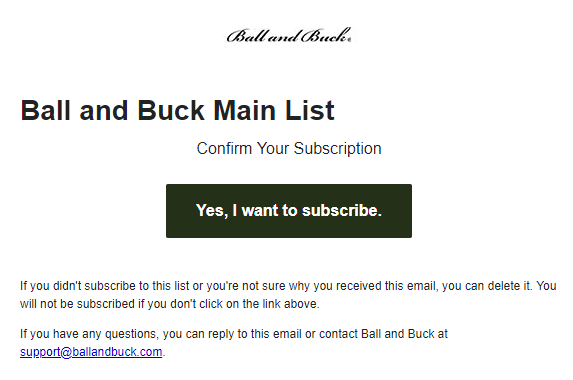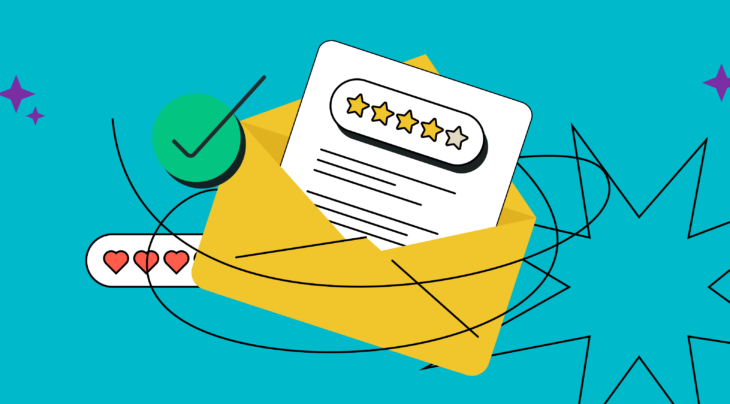Search engine optimization and content marketing are a perfect match, but what about email marketing? Is it the fifth wheel or vice versa a powerful booster to your SEO efforts? Can email marketing help you increase website traffic or improve your position in Google search results? Read on to find out the answers.
[contents]
Email marketing improves SEO: myth or reality?
Search engine optimization, or SEO for short, isn’t obviously knitted with email marketing since search engines don’t directly rank your individual emails or hunt your big mailing list. However, email marketing can trigger users’ specific behavior — share, comment, or link to your content — and this way lift your website within the search engines results.
Check out five SEO email marketing factors to increase your website traffic starting straight from the users’ inbox.
Inbound links
An inbound link, also frequently called a backlink, appears on an external website and leads to your website. Search engines recognize pages with high-quality links that have important information and bring value to the users.
Google algorithm approves inbound links that come from authoritative and trustworthy pages and see your website as a reliable source of information if such backlinks lead to it. As a result, your search rankings improve and means your website will attract more visitors: both newcomers and existing customers. Yet getting backlinked by authoritative pages isn’t very easy — you have to come up with high-demand information.
Backlinks and email marketing
Сreate skyscraper content. The formula is simple: search the link-worthy content → create a better chunk of content → send it to the right people.
Here it is: your subscribers get relevant information they are eager to share. So if you monitor search trends with special tools like Google Trends and create captivating content, you have all chances to drive more traffic to your website.
Try to get backlinked by coming up with an optimized variant of an already existing blog post. Add information corresponding to the latest search queries, fill the article with popular keywords and include this SEO polished piece in your email campaign.
Content promotion
In case there are a bunch of noteworthy posts on your blog, don’t let them get lost in the archives. Send a weekly or monthly digest to recap the most significant blog posts and events on your website. This way you’ll increase the visibility of these posts and drive more traffic to your website, escalating your chances of getting backlinked.
Content promotion and email marketing
You can mention some of the key points of your article in the email and invite recipients to finish reading it on your website. That’s what National Geographic does regularly. They gather their most popular articles, photos, and videos in a weekly easy-to-scan digest to attract as many readers to their website as possible.

On-site and social media engagement
When you knit SEO and email marketing together, relying solely on captivating content isn’t enough. This is when users’ engagement steps up.
To measure on-site engagement, check the following metrics:
- Time on site — indicates the time a user spent on your website.
- Bounce rate — the percentage of people who landed on one of your website pages, however, didn’t continue to other pages, simply leaving your website and proceeding to further search.
- Page views — the number of pages a user viewed during their visit to your website.
While social media engagement might not seem paramount for SEO as the previously mentioned options, it can increase your rankings and the visibility of your content. Engaging more social media platforms into the distribution of your content helps to spread your informational net far and wide, reach a larger audience, and attract more inbound links.
User engagement and email marketing
Link your offers, exciting news or other actionable information back to your website to engage your subscribers and make them visit your website over and over again. For example, through a CTA in your email, you can ask subscribers to leave a comment on your blog post or even like and share it. You can also add social media icons to the header or footer of your campaign to keep your subscribers engaged.
Look at the example from Wayfair. There are social media buttons in the footer of their email and a hashtag to improve the company’s social media presence.

Reputation building
Authority king in the world of SEO. Put simply, the better reputation your brand has, the higher your chances are to get backlinked by A-list publishers and this way promote your content and attract a wider audience.
Building a high reputation is a time-consuming process, but it’s an absolute lifeline for higher conversions, more promoting opportunities, and better online visibility.
Here’s what helps to build your brand reputation:
- Quality content. The content you create should cover hot topics that interest your subscribers. But most importantly, it should link with the authoritative sources and be relevant to your brand.
- Quality traffic. Place your content on influential websites with a vast audience and make sure it has something to do with the subject of your business.
Reputation building and email marketing
Create personalized subject lines and provide your readers with up-to-date content, like upcoming holidays or events. Make sure you elaborate the feedback system to showcase your expertise and your willingness to help the subscribers in case they have any difficulties with using your service or products. This will reduce your unsubscribe rate and position you as a trustworthy source of information, encouraging users to come back to your website.
Long-term development
Email marketing provides you with statistics that help identify the overall engagement of your audience with your campaigns and website in general. For example, open rates can show which subject line converts better, while click-through rates in your emails can demonstrate which articles on your blog are more popular.
Long-term development and email marketing
Use the data you track to craft content that appeals to your audience and thus will drive more quality traffic to your website.
Tips to rock your SEO and email marketing collaboration
Use permission email marketing
Purchasing or renting a mailing list is out of the question for a marketer with a strong sender reputation. Use a double opt-in subscription at the sign-up stage: send a confirmation email to your potential subscribers to get their explicit permission to receive your messages.
For instance, see how Ball and Buck include a subscription confirmation email in their double opt-in process:

Provide valuable information
Segment your audience according to their gender, age, location or any other personal data you have on hands to craft relevant email content for your subscribers. When users receive the information they need, they are more likely to open your email, click on the links you provide, and proceed to your website, thus, increasing its traffic.
Stay away from spam folders
Most marketers assume their emails can hit spam folders only if sent too often. In fact, email frequency isn’t the only obstacle on the way from getting out of the spam quicksand.
To lock up a spot in users’ primary inbox, make sure you
- Warm up your IP address. Before launching your email campaign from a freshly made IP address, it is reasonable to earn a providers’ trust and gain a high domain and IP reputation by implementing warming up procedures. Start with sending your first email campaign to a small audience and then gradually broaden it to reassure the spam filters you’re not sending spam.
- Monitor your sender reputation. Clean your mailing list, set up a postmaster to track delivery errors, spam complaints, email performance or so, and regularly check the blacklist status of your domain and IP address.
- Pay attention to email coding and design. Avoid using complex codes, heavy email layouts, caps lock, spammy words, and exclamation marks. Stay away from image overload; however, if you add images to your email, upload them to online cloud storage and remember to provide the alt text for fear that the image will fail to load.
Track your results
Make sure you measure your marketing efforts with the delivery rate, opens and click-throughs, and the number of unsubscribes after each campaign.
Key highlights
Email marketing isn’t obviously connected with SEO. Yet bringing some changes to your email marketing strategy can help boost your search engine rankings.
Remember to
- check your existing content and improve it by adding up-to-date information and trending keywords;
- share your most popular content with your subscribers in regular digest emails;
- track users’ on-site engagement with corresponding metrics and invite users to join your social media community;
- take care of your reputation, spend more time creating relevant and useful content, and place it on authoritative platforms;
- make sure you regularly track opens, clicks and unsubscribes to come up with the content which your audience will highly appraise in future.
Search engine optimization and content marketing are a perfect match, but what about email marketing? Is it the fifth wheel or vice versa a powerful booster to your SEO efforts? Can email marketing help you increase website traffic or improve your position in Google search results? Read on to find out the answers.
- Email marketing improves SEO: myth or reality?
- Inbound links
- Content promotion
- On-site and social media engagement
- Reputation building
- Long-term development
- Tips to rock your SEO and email marketing collaboration
- Use permission email marketing
- Provide valuable information
- Stay away from spam folders
- Track your results
- Key highlights
Email marketing improves SEO: myth or reality?
Search engine optimization, or SEO for short, isn’t obviously knitted with email marketing since search engines don’t directly rank your individual emails or hunt your big mailing list. However, email marketing can trigger users’ specific behavior — share, comment, or link to your content — and this way lift your website within the search engines results.
Check out five SEO email marketing factors to increase your website traffic starting straight from the users’ inbox.
Inbound links
An inbound link, also frequently called a backlink, appears on an external website and leads to your website. Search engines recognize pages with high-quality links that have important information and bring value to the users.
Google algorithm approves inbound links that come from authoritative and trustworthy pages and see your website as a reliable source of information if such backlinks lead to it. As a result, your search rankings improve and means your website will attract more visitors: both newcomers and existing customers. Yet getting backlinked by authoritative pages isn’t very easy — you have to come up with high-demand information.
Backlinks and email marketing
Сreate skyscraper content. The formula is simple: search the link-worthy content → create a better chunk of content → send it to the right people.
Here it is: your subscribers get relevant information they are eager to share. So if you monitor search trends with special tools like Google Trends and create captivating content, you have all chances to drive more traffic to your website.
Try to get backlinked by coming up with an optimized variant of an already existing blog post. Add information corresponding to the latest search queries, fill the article with popular keywords and include this SEO polished piece in your email campaign.
Content promotion
In case there are a bunch of noteworthy posts on your blog, don’t let them get lost in the archives. Send a weekly or monthly digest to recap the most significant blog posts and events on your website. This way you’ll increase the visibility of these posts and drive more traffic to your website, escalating your chances of getting backlinked.
Content promotion and email marketing
You can mention some of the key points of your article in the email and invite recipients to finish reading it on your website. That’s what National Geographic does regularly. They gather their most popular articles, photos, and videos in a weekly easy-to-scan digest to attract as many readers to their website as possible.

On-site and social media engagement
When you knit SEO and email marketing together, relying solely on captivating content isn’t enough. This is when users’ engagement steps up.
To measure on-site engagement, check the following metrics:
- Time on site — indicates the time a user spent on your website.
- Bounce rate — the percentage of people who landed on one of your website pages, however, didn’t continue to other pages, simply leaving your website and proceeding to further search.
- Page views — the number of pages a user viewed during their visit to your website.
While social media engagement might not seem paramount for SEO as the previously mentioned options, it can increase your rankings and the visibility of your content. Engaging more social media platforms into the distribution of your content helps to spread your informational net far and wide, reach a larger audience, and attract more inbound links.
User engagement and email marketing
Link your offers, exciting news or other actionable information back to your website to engage your subscribers and make them visit your website over and over again. For example, through a CTA in your email, you can ask subscribers to leave a comment on your blog post or even like and share it. You can also add social media icons to the header or footer of your campaign to keep your subscribers engaged.
Look at the example from Wayfair. There are social media buttons in the footer of their email and a hashtag to improve the company’s social media presence.

Reputation building
Authority king in the world of SEO. Put simply, the better reputation your brand has, the higher your chances are to get backlinked by A-list publishers and this way promote your content and attract a wider audience.
Building a high reputation is a time-consuming process, but it’s an absolute lifeline for higher conversions, more promoting opportunities, and better online visibility.
Here’s what helps to build your brand reputation:
- Quality content. The content you create should cover hot topics that interest your subscribers. But most importantly, it should link with the authoritative sources and be relevant to your brand.
- Quality traffic. Place your content on influential websites with a vast audience and make sure it has something to do with the subject of your business.
Reputation building and email marketing
Create personalized subject lines and provide your readers with up-to-date content, like upcoming holidays or events. Make sure you elaborate the feedback system to showcase your expertise and your willingness to help the subscribers in case they have any difficulties with using your service or products. This will reduce your unsubscribe rate and position you as a trustworthy source of information, encouraging users to come back to your website.
Long-term development
Email marketing provides you with statistics that help identify the overall engagement of your audience with your campaigns and website in general. For example, open rates can show which subject line converts better, while click-through rates in your emails can demonstrate which articles on your blog are more popular.
Long-term development and email marketing
Use the data you track to craft content that appeals to your audience and thus will drive more quality traffic to your website.
Tips to rock your SEO and email marketing collaboration
Use permission email marketing
Purchasing or renting a mailing list is out of the question for a marketer with a strong sender reputation. Use a double opt-in subscription at the sign-up stage: send a confirmation email to your potential subscribers to get their explicit permission to receive your messages.
For instance, see how Ball and Buck include a subscription confirmation email in their double opt-in process:

Provide valuable information
Segment your audience according to their gender, age, location or any other personal data you have on hands to craft relevant email content for your subscribers. When users receive the information they need, they are more likely to open your email, click on the links you provide, and proceed to your website, thus, increasing its traffic.
Stay away from spam folders
Most marketers assume their emails can hit spam folders only if sent too often. In fact, email frequency isn’t the only obstacle on the way from getting out of the spam quicksand.
To lock up a spot in users’ primary inbox, make sure you
- Warm up your IP address. Before launching your email campaign from a freshly made IP address, it is reasonable to earn a providers’ trust and gain a high domain and IP reputation by implementing warming up procedures. Start with sending your first email campaign to a small audience and then gradually broaden it to reassure the spam filters you’re not sending spam.
- Monitor your sender reputation. Clean your mailing list, set up a postmaster to track delivery errors, spam complaints, email performance or so, and regularly check the blacklist status of your domain and IP address.
- Pay attention to email coding and design. Avoid using complex codes, heavy email layouts, caps lock, spammy words, and exclamation marks. Stay away from image overload; however, if you add images to your email, upload them to online cloud storage and remember to provide the alt text for fear that the image will fail to load.
Track your results
Make sure you measure your marketing efforts with the delivery rate, opens and click-throughs, and the number of unsubscribes after each campaign.
Key highlights
Email marketing isn’t obviously connected with SEO. Yet bringing some changes to your email marketing strategy can help boost your search engine rankings.
Remember to
- check your existing content and improve it by adding up-to-date information and trending keywords;
- share your most popular content with your subscribers in regular digest emails;
- track users’ on-site engagement with corresponding metrics and invite users to join your social media community;
- take care of your reputation, spend more time creating relevant and useful content, and place it on authoritative platforms;
- make sure you regularly track opens, clicks and unsubscribes to come up with the content which your audience will highly appraise in future.






